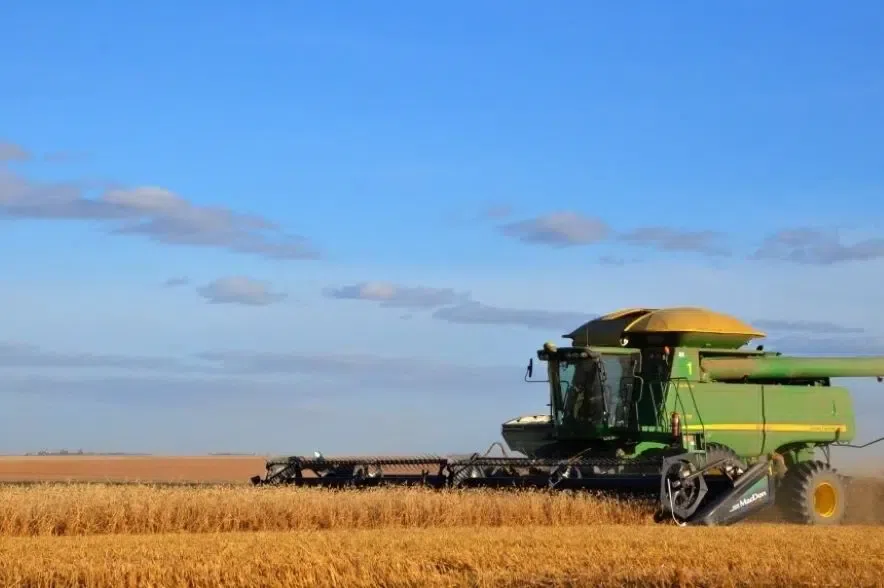Farmers across Saskatchewan were busy over the past week, as harvest operations continue across the province.
According to the most recent crop report from the Saskatchewan Ministry of Agriculture, which covered the week ending on Monday, harvest is now 84 per cent complete, up 16 per cent over last week. While progress is still a bit behind the five-year average of 92 per cent, Saskatchewan producers are now ahead of the 10-year average of 81 per cent.
Read more:
- Sask. harvest 68% complete, but lagging behind long-term averages: Crop report
- Sask. farmer reflects on 132 years of harvest and change
- An Alberta farm is home to Beef, the world’s tallest steer
Harvest is furthest along in the southwest (87 per cent), but the west-central and northwest regions are close behind (86 per cent). In the southeast, 84 per cent of the year’s crops are in the bin, while the northeast is sitting at 83per cent. East-central parts of the province were lagging slightly behind, with harvest 80 per cent complete.
The year’s winter wheat, fall rye and triticale crops have been completely harvested, the ministry said, while peas are sitting at 99 per cent, spring wheat is at 92 per cent, durum is at 91 per cent and oats are at 87 per cent. The barley harvest is also close to wrapping up at 94 per cent, while the canary seed harvest is 61 per cent done. Chickpeas are sitting at 56 per cent, while 42 per cent of the soybean crop is in the bin.
“Producers made significant progress on oilseed harvest this past week and canola is now 71 per cent, flax is 45 per cent and mustard is 79 per cent harvested,” the ministry added.
While minimal rain over the past week allowed producers to make good headway on harvest, soil moisture conditions declined across the province as a result.
In cropland, topsoil moisture was rated as one per cent surplus, 49 per cent adequate, 38 per cent short and 12 per cent very short. Hayland topsoil moisture was rated as one per cent surplus, 43 per cent adequate, 40 per cent short and 16 per cent very short. In pastures, moisture was rated as one per cent surplus, 34 per cent adequate, 39 per cent short and 26 per cent very short.
“When asked about livestock water supplies, three per cent of respondents said there are severe/widespread shortages occurring. Thirty-one per cent reported moderate shortages, 16 per cent said shortages are anticipated and 50 per cent said there are no shortages occurring/anticipated,” the ministry explained in its report.
“Provincially 23 per cent of respondents said producers are worried about livestock water quality while the remaining 77 per cent did not have concerns at this time. The bulk of water concerns are related to dry weather, low water levels in dugouts and decreasing water quality.”
Strong winds were the most common source of crop damage during the week ending on Monday, the ministry said, with some producers reporting winds strong enough to blow away their swaths.
The ministry also advised producers and the public to use extra caution during harvest, which is often the busiest time of year on farms.
“With an increase in the number of machinery fires being reported, we would like to remind producers to have fire mitigation resources ready, blow off their combines regularly and take precautions when working around powerlines,” the ministry added.
“The public is also reminded to exercise caution when encountering machinery and equipment travelling on roadways.”











